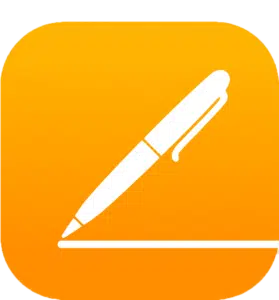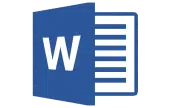Resumes are a vital part of job hunting, and various types of resumes can help you land a job while hunting.
However, picking the right resume type can be challenging. Each type of resume has benefits and can work well to help you showcase your talents, achievements, and accomplishments.
Resumes can look a few different ways, including chronological order or a compilation of infographic material to showcase who you are. Read on to learn the different types of resumes, their benefits, and how you can use them to make yourself marketable.
What Are the Types of Resumes?
Although there are many resume styles, these six are among the most useful and will display your skills clearly and concisely.
The different resumes include those that show your skills, achievements, and accomplishments in a functional, chronological, or miniature way.
Some other resume types will implement visual aids to help employers see your skills better.
Functional Resume
A functional resume is what it sounds like. This resume will likely forgo covering any work or educational history and instead focus only on your achievements.
For example, projects and awards should be toward the top of a functional resume for the highest impact.
What Should a Functional Resume Include?
A functional resume is less about discussing your work history and educational background. Instead, this resume type will focus on your accomplishments and achievements.
Any certifications or work achievements and projects should be in the spotlight. Making these items the most vital part of your resume will help you put your focus on how you function in a work environment.
Who is it Best For?
A functional resume is best for those who don’t have degrees and may not have much work experience.
For example, employees who have been in the same industry or role for a few years will likely benefit most from a functional resume because it will help gloss over a perceived lack of experience.
Chronological Resume
A chronological resume means accomplishments will be in the order they happened to you. However, work history and educational background should be separate.
Any certifications and other items pertinent to your resume will be in different sections. Separating them will keep your resume looking tidy while remaining chronological.
What Should a Chronological Resume Include?
Chronological resumes list accomplishments, work history, and educational background in a chronological way.
This resume type will lay out your history, leaving little doubt about your experience and abilities.
A chronological resume should start at the beginning and work toward the most recent accomplishments under your belt.
Who is it Best For?
A chronological resume is the default type and is best for most people.
This resume is the most widely used and recommended because it will help showcase where you have been and your experience with little fuss. Employers will find it easy to see your experience and work history with this resume type.
Combination Resume
A combination resume is dynamic and can present in a variety of ways. This resume type will combine two types of resumes to make something new.
Because a combination resume is unique, it offers you something unlike anyone else in the applicant pool and may land you in the interview pile.
What Should a Combination Resume Include?
A combination resume will borrow aspects from other resume types and combine them to make a unique style that can help you get noticed and hired.
Combination resumes can use two or three resume styles to craft something that uses creative ways to make you stand out.
For example, a resume combining infographic and chronological types can be captivating and leave the employer wanting to learn more.
Who is it Best For?
A combination resume is best used by those seeking a job in the creative industry.
Combination resumes usually require creativity and can be a perfect way for you to showcase your skills with infographics and presentations and make you seem like the perfect candidate for a writing role or graphic design job.
Targeted Resume
A targeted resume can help you decide which items are the best on your resume and help you choose the things that are the most likely to get you hired.
Targeted resumes seek to help you shine by picking out the most beneficial portions of your career instead of listing everything.
However, this resume type is different than a functional resume because it is tailored to the position you want to apply for.
What Should a Targeted Resume Include?
Targeted resumes are a perfect tool for those who want to highlight specific aspects of their career.
This type of resume can make deciding what to put on a resume easier and help you tailor your experience to suit a role.
Who is it Best For?
A targeted resume is best suited for those looking to apply to their dream positions. A targeted resume carries more weight because it will have been crafted with more time, energy, and precision.
This type of resume is not suited for applying everywhere you can. Those looking to work at a specific company or location should consider a targeted resume.
Mini Resume
A mini resume usually lists all work and educational history in short bursts, leaving the details for the interview.
This resume type is a perfect way to introduce yourself and your achievements without going into detail.
Save yourself-praises for the interview where you can dive deeper into why you’re perfect for the job and use a mini resume to get your name on the interview list.
What Should a Mini Resume Include?
Mini resumes are a new trend that can help you and the employer get through the hiring process faster.
This resume type focuses on offering clear, concise information without overwhelming the employer with your accolades.
Mini resumes give a grand view of your work and educational history in short summarizations. However, mini resumes may not be able to fit your references on the resume.
Who is it Best For?
A mini resume is best for those with plenty of experience and educational history. This resume type can work well for those with portfolios of work to show.
Additionally, a mini resume speaks of confidence because it shows that you don’t need to list everything about yourself. After all, you know you’re ideal for the job.
Infographic Resume
An infographic resume will showcase your talents, achievements, and accolades in a visual format. These resumes can use pictures, pie charts, bar graphs, and more to showcase what you have done in previous roles.
For example, one of the best uses for an infographic resume is to show how you boosted sales in a department with some program implementation.
What Should an Infographic Resume Include?
An infographic resume is a unique and increasingly common resume type and can work well to capture an employer’s attention within only the first 30 seconds.
Infographic resumes focus on offering visual aids to grab and keep attention as long as possible to land your name on the interview list.
Who is it Best For?
Infographic resumes are best for those in a performance, sales, or training role. If your line of work uses statistics or numbers to calculate how well you’ve done something, you can use those numbers to create a graph that will enhance your resume.
What Is The Most Common Type of Resume?
The most common type of resume is the chronological type. This version will list all your accomplishments and achievements in a timed list.
A chronological resume will summarize your work and education history chronologically, too.
How To Choose A Type of Resume
Choosing the correct type of resume can be challenging.
However, these resume tips help you choose a resume style for your industry, personal experience, and the role you are applying for.
Keep in mind what qualifications you need to highlight to get the position you are looking for.
Follow Job Listing Instructions
Employers want to know that you understand instructions and are willing to do what it takes to get the position.
Some job listings may require you to answer a specific question or place a certain word in the subject line of an email. Read the job listing carefully to ensure you follow all special instructions.
Choose The One That Best Fits Your Industry
Choose a resume type that suits the industry you’re looking to work in. For example, an infographic resume may not be best suited for an artistic role or a writing role.
Additionally, a functional or mini resume may not be suited for higher-level positions that require more detail and experience.
When In Doubt, Opt for Chronological
If you can’t decide on the best resume for you, choose the chronological resume. This resume type has been the standard for decades and will showcase your skills and achievements without much fuss or dazzle.
How To Build A Type of Resume
Building your resume can be nerve-wracking, even when you know what type of resume you’re looking to make.
Consider using a resume template and ensure you follow all the instructions and sections in the resume to make it look visually appealing.
All of the vital pieces of information about yourself should be present.
Use a Resume Template
A resume template is a perfect place to start since it can help you understand which sections you should add to your resume.
Each section can be robust with information and details necessary for the position you’re applying for.
Follow Instructions
Follow each instruction on the resume template to ensure you’re including all the information your prospective employer needs to know.
Resumes missing essential information will likely get tossed in the garbage and go unread.
Add the Important Information
Add all the important details about your career and experience. For example, include all contact information, details about pertinent positions, and awards you’ve won for excellence in your roles.
Additionally, you may add a section for your skills, like language proficiency and completed certifications.
Edit for Clarity
Always check your resume for typos or errors. These errors can make you seem unprofessional and speak to your attention to detail.
Don’t give your prospective employers a reason to think you aren’t reliable by missing typos and small mistakes.
Wrapping Up
Various types of resumes can help you market yourself and showcase your abilities and talents. These resumes are arranged in various ways, including miniature listing and infographic types that help show your skills.
You can build your resume using a template and edit the sections to input your personal information. Be careful to edit your information carefully and proofread to ensure you’re not missing any vital information about yourself.








